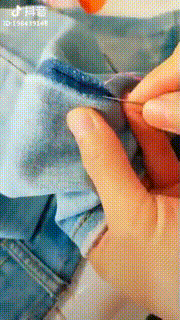The Late Rodentocene: 20 Million Years Post-establishment
The Late Rodentocene: 20 million years post-establishment

Full Boar Action: The Bumbaas
The bumbaas are descendants of the cavybaras that reigned in the Middle Rodentocene as the largest animals alive on the planet. Nowadays, such a distinction is gone, as other lineages continue to increase in size in the vacancy of niches: however, this particular branch of the family is still going strong, especially in the lineage of the bumbaas, adaptable omnivores that thrive throughout Ecatoria but also in Westerna and parts of Nodera too, as the cooling temperatures of the end of the Rodentocene once more resurface the land bridges which allowed new lineages to spread across the continents. And so the bumbaas spread and diversified in the different environments, foraging for grasses, shrubs, roots, fruit, invertebrates and carrion, on opportunistic occasions.
Aside from the desert bumbaa of the Great Ecatorian desert live a wide variety of other species. Other members of its genus, such as the forest bumbaa (Scrofacricetus matatai) are found elsewhere throughout Ecatoria, where, like their desert-dwelling cousin, are also avid part-time insectivores, supplementing their diet of grasses and roots with raiding insect nests: especially termites, whose mounds are abundant and a favorite of the bumbaas who break into the layers of hardened mud using their sharp tusks to access the juicy morsels within.
However, not all bumbaas closely resemble the members of this genus. Some, such as the meenypigs (Porcimys spp.) have become smaller and more slender, becoming tiny herbivores in the dense forests of Ecatoria much like mouse deer do. They feed primarily on mosses and lichens that grow on the forest floor and on the roots of trees and on logs, and with their smaller sizes prefer to run from enemies than fight them, thus favoring a build with longer legs and a leaner body.
But by far the most unusual member of the bumbaa family is the masked luchaboar (Tetracerodontomys venustafacies), a highly sexually-dimorphic species with a distinctive social system, and the only genus of bumbaa native to northern Nodera. Herds are comprised of a harem of up to a dozen females, their offspring, and a single dominant alpha male who stands out with his elaborate weaponry and brightly-colored facial markings that stand him out against the rest of the more drably-colored herd.
Most bumbaas sport only a single pair of tusks, on their lower jaw as extensions of their incisors. However, due to the constant wear and tear of abrasive vegetation on their teeth, the bumbaa's molars have also evolved to grow constantly, like their incisors, to deal with the continuous damage, and in male luchaboars the first pair of upper molars have become tusks as well: sporting a grand total of four. Males put these unusual teeth to good use, as they are fiercely territorial and aggressive: their brilliant facial markings serve as warning coloration to intimidate rivals, which they try to scare off by loud and threatening squeals, but more often than not results in a full-on wrestling match as the two males try to wrestle each other to the ground and jab each other with their tusks, which frequently results in bloody wounds and broken tusks, though as their tusks continually grow these damage is of little consequence as long as the root remains intact.
▪▪▪▪▪▪▪▪▪▪▪▪▪
More Posts from Enbylvania65000 and Others
I don't know if I'll ever post again. So many communities I have long identified are now antisemitic cesspools. I don't want to post politics here, but I also don't want to participate in a platform outright hostile to my country's existence. Not deleting the blog or the account - I still check things occasionally and might come back to posting some day who knows. I'm also not bothering to unfollow people because I don't have the spoons to check on everyone's post history over the last several months.


dana international 💕 israeli queer royalty 🇮🇱👸🏻
the first trans contestant and winner of eurovision !!!! 🇮🇱



Last question for now: How do I get dates to show up on my posts? I don’t like everything being undated.
What’s the difference between text and chat?

Brian self portrait
Apparently Brian drew it in Japanese news show (x)

You’re welcome.
The Early Therocene: 30 million years post-establishment

Tallest of All: The Girats
The great success of the boingos across the plains and grassland of the Early Therocene would spell bad news for the hamtelopes. While enjoying a brief success in the Middle Rodentocene, they would eventually be outcompeted by the boingos, with a more-efficient means of locomotion and more-specialized teeth for eating tough grasses. As such, the hamtelopes would be pressured into other niches as they were pushed out of the plains: many would become forest and jungle herbivores, others would remain as small hare-like grazers in the plains, and only on isolated environments do the hamtelopes get to dominate with the absence of competition.
But one family of hamtelopes stubbornly stuck to the plains, and despite the abundance of competing boingos grew to megafaunal sizes. However, they reached higher up, into the treetops where the boingos could not reach, and so were selected to grow taller still, and so this trend reaches its logical conclusion in the Early Therocene, with the tallest hamsters ever to walk the planet: the girats.
Towering high-browsers that feed on the sparse trees in the open plains, the girats reach tremendous heights of up to 16 feet, with their long legs and even longer necks. They evolved prehensile lips and long, flexible tongues to grasp and pluck branches and stems from trees, while their incisors served as pruning shears to clip off leaves to be swallowed. With virtually no competition for these high leaves the girats dominate and thrive, managing a coexistence with the other grazers that drove off most of their smaller relatives.
Girats are mostly solitary, though occasionally gather in groups to seek out mates during the breeding season. Male girats are easily distinguished from females by the presence of large, keratinous horns sported on their protruding cheekbones, which they use in headbutting contests with other males, swinging their heads at each other and trying to inflict bruising whacks onto their rivals with their blunt, hammer-like horns.
At least a dozen species of girat range all across Nodera and Easaterra, where they vary in color and the arrangement of their horns. The axehorn girat (Altocervimys securiceros) is the most common species in Nodera, while its relative the trihorn girat (Giraffacricetus triceros) lives further south in the savannah of Nodera. Meanwhile in the tropical forests of central Easaterra lives the splendid girat (Procerocricetus magnificens), one of several species in the genus Procerocricetus that adapted to denser jungles instead of the open plains. Unlike their cousin the axehorn girat, the trihorn and splendid species possess sharper horns, due to the need of extra defenses with the increased number of larger predators further south, and as such are less aggressive toward their own species than the axehorns: with more pointed weaponry, a headbutting contest between two rival males can easily result to death for them both, and such they rarely fight unless absolutely necessary.
▪▪▪▪▪▪▪▪▪
Just realised tumblr allows html editing, but the other reasons still apply. Also, it's just not the same editing within the confines of a tumblr panel and doing so from a website you can fine tune the layout of and control the comments on etc
I feel like maybe starting a blog again I want to write in depth posts about topics with full html support And I also want to talk politics in a public space without all the problems of talking politics on social media. Especially I want to keep my tumblr account mostly non-political.
Also first time posting in months Again. Or even checking tumblr. But this is my only social network now (stopped using twitter even before the fiascos with Musk) and I kind of miss having that. But I also find myself with a lack of anything to share. Life has been pretty boring in most non-political regards.
-
 nolimitjayski24 liked this · 1 month ago
nolimitjayski24 liked this · 1 month ago -
 arcasvethix liked this · 4 months ago
arcasvethix liked this · 4 months ago -
 pseudosnakefansblog liked this · 5 months ago
pseudosnakefansblog liked this · 5 months ago -
 keresacheron liked this · 8 months ago
keresacheron liked this · 8 months ago -
 el-recaptas liked this · 9 months ago
el-recaptas liked this · 9 months ago -
 theenderreddit liked this · 9 months ago
theenderreddit liked this · 9 months ago -
 nikkismalls liked this · 1 year ago
nikkismalls liked this · 1 year ago -
 magnificentlilywitch liked this · 1 year ago
magnificentlilywitch liked this · 1 year ago -
 jcknil liked this · 1 year ago
jcknil liked this · 1 year ago -
 monster-creator-12 liked this · 1 year ago
monster-creator-12 liked this · 1 year ago -
 eldritch-orange liked this · 2 years ago
eldritch-orange liked this · 2 years ago -
 rodent178 liked this · 2 years ago
rodent178 liked this · 2 years ago -
 darkwingphoenix liked this · 2 years ago
darkwingphoenix liked this · 2 years ago -
 lore45 reblogged this · 2 years ago
lore45 reblogged this · 2 years ago -
 lore45 liked this · 2 years ago
lore45 liked this · 2 years ago -
 jarrax355 liked this · 2 years ago
jarrax355 liked this · 2 years ago -
 trashysaur1125 liked this · 2 years ago
trashysaur1125 liked this · 2 years ago -
 aotheovergod liked this · 2 years ago
aotheovergod liked this · 2 years ago -
 violence-as-a-love-language liked this · 2 years ago
violence-as-a-love-language liked this · 2 years ago -
 manoszilla399 liked this · 2 years ago
manoszilla399 liked this · 2 years ago -
 aem9phase liked this · 2 years ago
aem9phase liked this · 2 years ago -
 smb62 liked this · 3 years ago
smb62 liked this · 3 years ago -
 crowjack20 liked this · 3 years ago
crowjack20 liked this · 3 years ago -
 snallysaurus liked this · 3 years ago
snallysaurus liked this · 3 years ago -
 galojou liked this · 3 years ago
galojou liked this · 3 years ago -
 ruby-seadragon liked this · 3 years ago
ruby-seadragon liked this · 3 years ago -
 tundragravedigger liked this · 3 years ago
tundragravedigger liked this · 3 years ago -
 littlemooncity liked this · 3 years ago
littlemooncity liked this · 3 years ago -
 capnportofficial liked this · 3 years ago
capnportofficial liked this · 3 years ago -
 kenzietensei liked this · 3 years ago
kenzietensei liked this · 3 years ago -
 bestia-02 liked this · 3 years ago
bestia-02 liked this · 3 years ago -
 ajaajka liked this · 3 years ago
ajaajka liked this · 3 years ago -
 cdbeetle43 liked this · 4 years ago
cdbeetle43 liked this · 4 years ago -
 thoughts-are-complicated liked this · 4 years ago
thoughts-are-complicated liked this · 4 years ago -
 cannotfindagoodusername liked this · 4 years ago
cannotfindagoodusername liked this · 4 years ago -
 mcpieandhaggis reblogged this · 4 years ago
mcpieandhaggis reblogged this · 4 years ago -
 discovoyblends liked this · 4 years ago
discovoyblends liked this · 4 years ago -
 creaturedeityendless liked this · 4 years ago
creaturedeityendless liked this · 4 years ago -
 itg15 liked this · 4 years ago
itg15 liked this · 4 years ago -
 mcpieandhaggis liked this · 4 years ago
mcpieandhaggis liked this · 4 years ago -
 mimigamasked liked this · 4 years ago
mimigamasked liked this · 4 years ago -
 enbylvania65000 reblogged this · 4 years ago
enbylvania65000 reblogged this · 4 years ago -
 enbylvania65000 liked this · 4 years ago
enbylvania65000 liked this · 4 years ago -
 streaksofsunrise liked this · 4 years ago
streaksofsunrise liked this · 4 years ago -
 thebamboozlerblr-blog liked this · 4 years ago
thebamboozlerblr-blog liked this · 4 years ago -
 spiderlingbriary reblogged this · 4 years ago
spiderlingbriary reblogged this · 4 years ago -
 spiderlingbriary liked this · 4 years ago
spiderlingbriary liked this · 4 years ago -
 a-goat-sticks-its-nose-in-things liked this · 4 years ago
a-goat-sticks-its-nose-in-things liked this · 4 years ago
